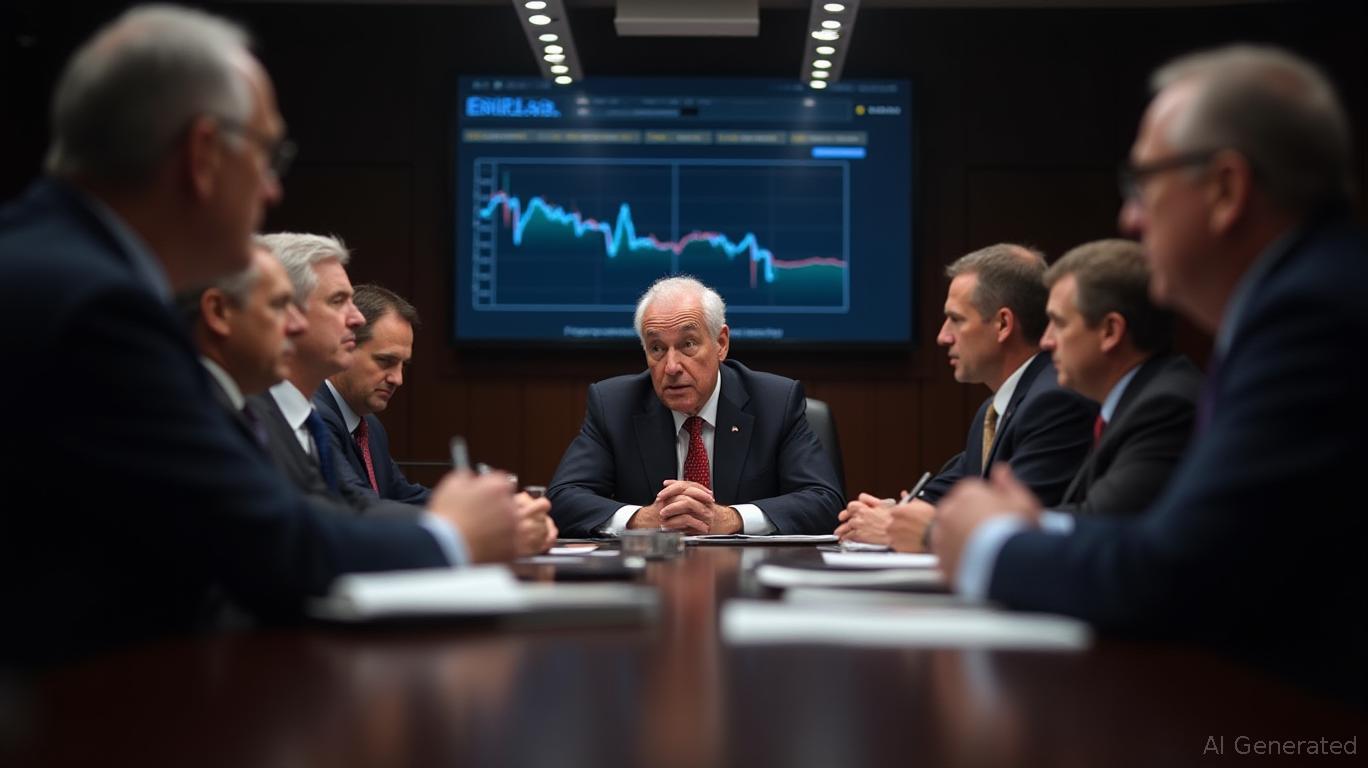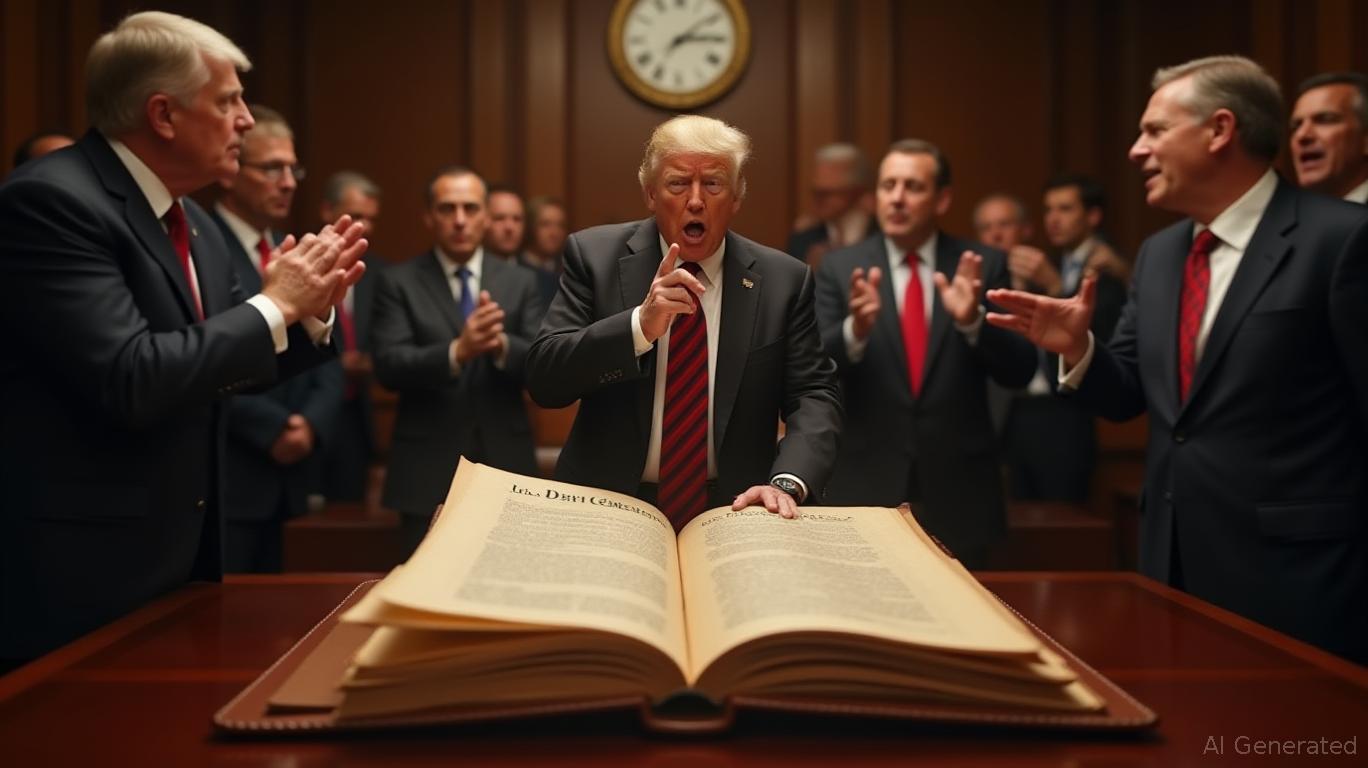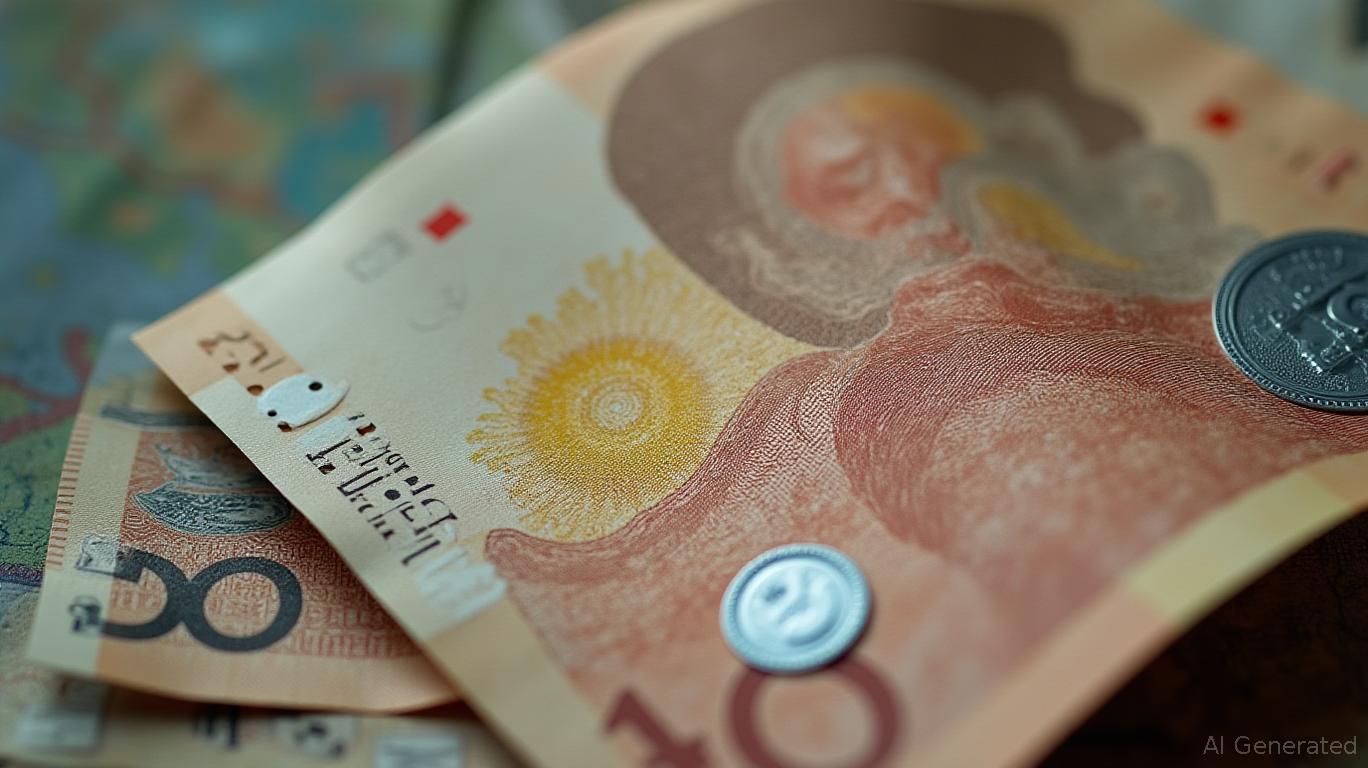Stubborn Inflation and Tightening Liquidity Prompt Fed to Reverse Course on Policy
- Fed to cut rates by 0.25% and pause QT, reversing two-year liquidity-draining strategy amid labor market fragility and stagflation risks. - 5-week government shutdown slashes 0.2% weekly GDP growth, exacerbating labor market strain and corporate balance sheet adjustments. - Intel and Eversource Energy restructure finances through debt reduction and asset sales amid macroeconomic uncertainty. - Fed's QT halt aims to prevent reserve scarcity as repo rates rise, with potential balance sheet expansion planne
This week, the Federal Reserve is expected to unveil a major change in its monetary policy, with plans to lower short-term interest rates by 0.25 percentage points and bring its balance sheet reduction—known as quantitative tightening (QT)—to a stop. Fed Chair Jay Powell outlined this policy shift in his October 14 address, signaling an end to the central bank’s two-year campaign to withdraw liquidity from the financial system. At least one dissent is anticipated from newly appointed Governor Stephen Miran, who has pushed for deeper rate cuts due to worries about a softening job market and persistent inflation threats, according to
This policy adjustment comes as the ongoing government shutdown continues to drag on economic growth, reducing real GDP by about 0.2% each week and intensifying concerns about a drawn-out slowdown. Now in its fifth week, the shutdown has left 750,000 federal employees without pay and disrupted hiring at state and local levels, adding to the strain on a labor market already showing signs of weakness. The Fed’s October Beige Book pointed to “stagflationary” trends, such as persistent inflation in services and “opportunistic pricing” by companies, fueled by less competition and higher tariffs, as highlighted in KPMG’s report.

The move to end QT also stems from rising worries about liquidity in the overnight fed funds market, where reserves are shrinking as balance sheet reduction nears its end.
Companies are also adjusting their finances. Intel, under new CEO Lip-Bu Tan, has focused on cutting debt and increasing operational flexibility, supported by $8.9 billion in government funding and a $5 billion investment from Nvidia. The company’s CFO stressed a cautious approach to capital expenditures, in line with Tan’s strategy of “waiting for demand before investing,”
The Fed’s decision to cut rates and pause QT comes just before the release of key inflation data, including the September CPI report, which showed inflation rising less than expected. While this gives the Fed more room to focus on supporting jobs, experts warn that rate reductions alone may not be enough to counteract the negative effects of the shutdown and tariffs. The October 24 economic calendar on includes important data points like core CPI and manufacturing PMI, which could influence the Fed’s ultimate policy choices.
With early signs of stress in the repo market and companies adapting to changing economic conditions, the Fed’s actions indicate a shift toward supporting growth while keeping inflation in check. As markets prepare for a record $31 billion in
Disclaimer: The content of this article solely reflects the author's opinion and does not represent the platform in any capacity. This article is not intended to serve as a reference for making investment decisions.
You may also like
Political Stalemate to Drive U.S. Debt Higher Than Italy and Greece by 2030
- U.S. public debt-to-GDP ratio will surpass Italy and Greece by 2030, per IMF forecasts, reaching 143% vs. 137% and 130%. - Trump-era tax cuts, $1T defense spending, and political gridlock drove deficits above 7% of GDP since 2025. - Italy/Greece reduced deficits via austerity and EU funds, while U.S. faces debt servicing costs exceeding education/transport budgets. - Analysts warn U.S. debt path is unsustainable without structural reforms, as political stalemate blocks spending cuts or tax hikes.

China's approach with the Digital Yuan seeks to transform the landscape of international finance
- PBOC establishes Beijing and Shanghai centers to advance digital yuan strategy, enhancing domestic infrastructure and global reach. - Digital yuan pilot transactions exceed 14.2 trillion yuan, supported by 225 million wallets, while PBOC enforces crypto bans to mitigate risks. - Dual-center model balances domestic innovation with international collaboration, expanding digital yuan adoption through commercial banks. - China’s strategy aims to reshape global CBDC perceptions, leveraging regulatory rigor an

U.S. Bets $40 Billion on Argentina's Economic Reforms as Peso Rallies and Poverty Rises
- Trump praised Argentina's Milei for a landslide election win, linking it to U.S. financial gains amid a 6% peso surge against the dollar. - U.S. Treasury's $20B currency swap and $40B total stake aim to stabilize Argentina's economy, despite 53% poverty rates and political instability risks. - Milei's austerity reforms face challenges: poverty deepening, congressional alliances needed, and potential peso collapse if reforms stall. - Markets reacted positively to the election, with Argentine bonds and sto

Cardano News Update: Cardano's Decline Compared to BigBear's AI Bet – Will Excitement Keep the Value Up?
- Cardano (ADA) faces bearish signals with a potential 20% price drop to $0.5085, marked by a death cross pattern and declining DeFi TVL. - BigBear.ai (BBAI) surged 300% YTD on defense AI contracts but faces valuation skepticism, trading at 13× forward sales vs. $5.83 estimated fair value. - The stock's $390M cash and $380M contract backlog contrast with C3.ai's 50% decline and legal issues, highlighting sector volatility. - Analysts remain divided on BigBear's OB3-aligned government opportunities versus e
